Poll: Minnesota malaise
Disquieted voters have flipped the script on the state’s usually sunny disposition as they prepare to head to the polls this fall.
What is the mood of Minnesota voters as they prepare to go to the polls this year? Respondents in the Thinking Minnesota Poll answered that question loud and clear. Questions that captured Minnesotans’ feelings about the future, economic opportunities, and trust in institutions reveal a mood of unease and growing concern about the future.
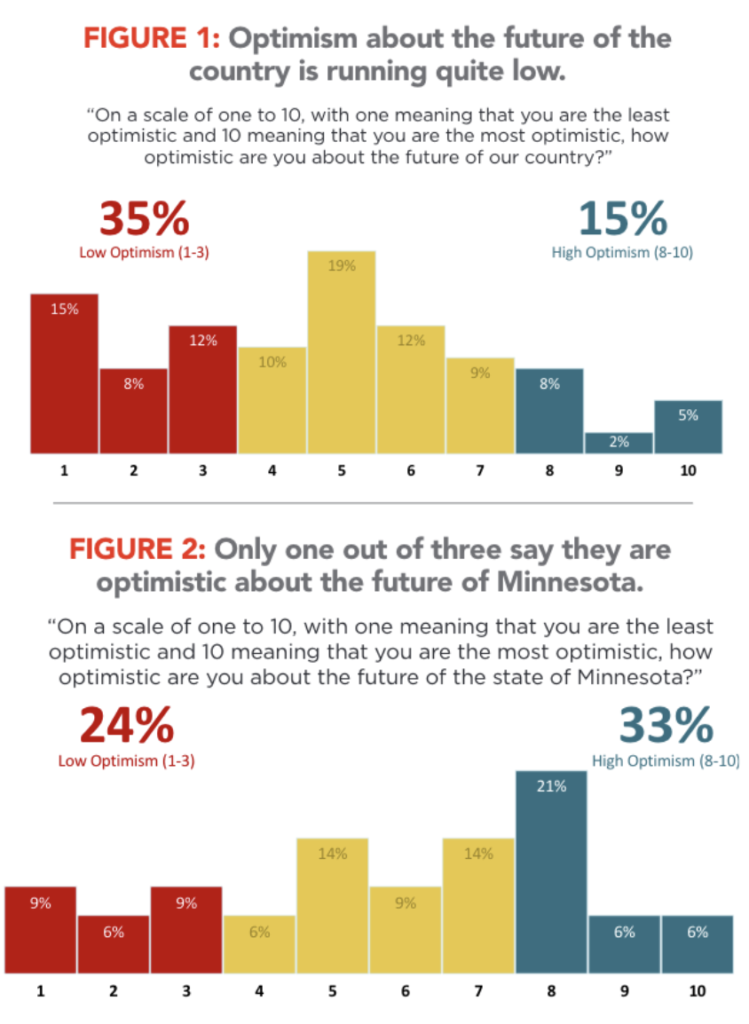
The poll was conducted by Meeting Street Insights, a nationally recognized polling operation based in Charleston, S.C. Using a mix of cellular and landline phones, the company interviewed 500 registered voters across Minnesota from August 8-10, 2022. The margin of error is +-4.38 percent.
For a broad perspective, Minnesotans were asked about their confidence in the future of their country on a 1 to 10 scale with 10 being most optimistic and one being least optimistic. The results are striking. Only 15 percent of respondents placed their optimism in the 8 to 10 range, compared with 35 percent who rated their confidence at only 1 to 3. The mean answer was only 4.7. Those results are a far cry from the optimism that has typified American history.

Voters expressed more optimism about their state than the country as a whole. Asked the same question about Minnesota’s future, 34 percent of respondents rated their optimism 8 through 10, while 24 percent rated it 1 through 3. The mean answer was 5.8.
But when asked the question, “Do you think that your children or the next generation will be better off than your generation economically, worse off than your generation economically, or will they be about the same?” responses revealed an underlying pessimism not historically common among Minnesotans. A stunning 56 percent of Minnesotans expect their children to be worse off than they are, while only 13 percent expect a more prosperous future for the next generation.
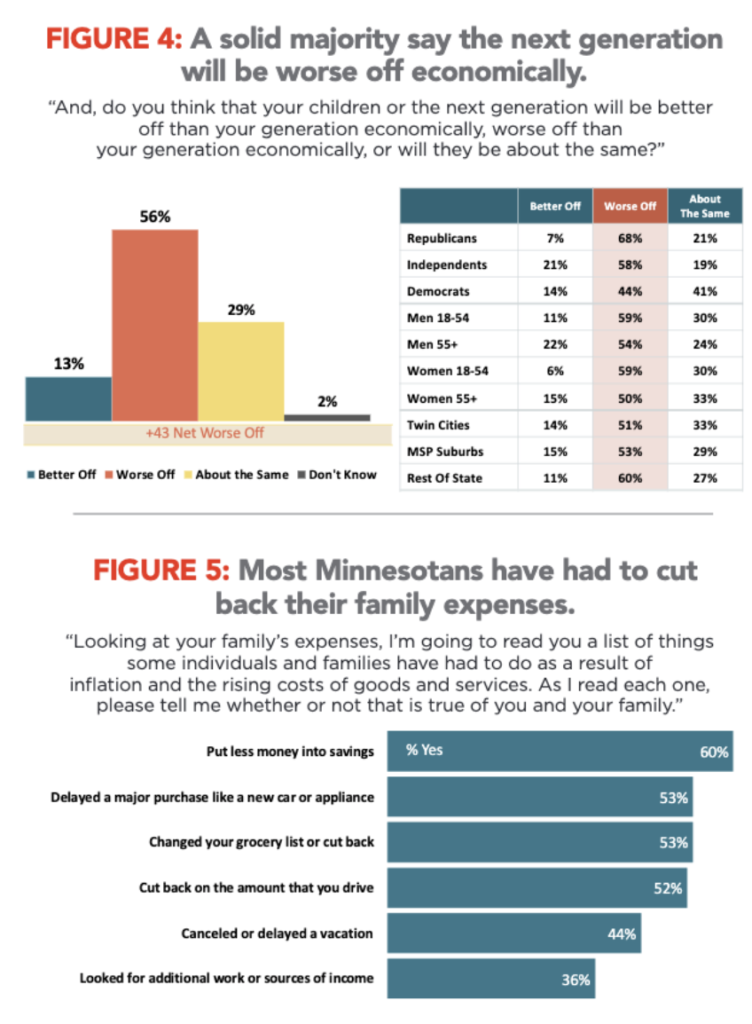
Why are Minnesotans uneasy, not to say despondent, about the future? In part because they are being squeezed by a rising cost of living and declining real wages. We asked our respondents whether they had taken various costsaving measures as a result of rising inflation. The results indicate that the cost of living is inflicting real hardship on Minnesota’s families.
“This survey highlights the fact that Minnesotans are feeling the squeeze of inflation. Not only is it affecting their month-to-month finances, but they are increasingly pessimistic about the type of economy they’re passing onto their children,” says pollster Rob Autry, president of Meeting Street Insights.
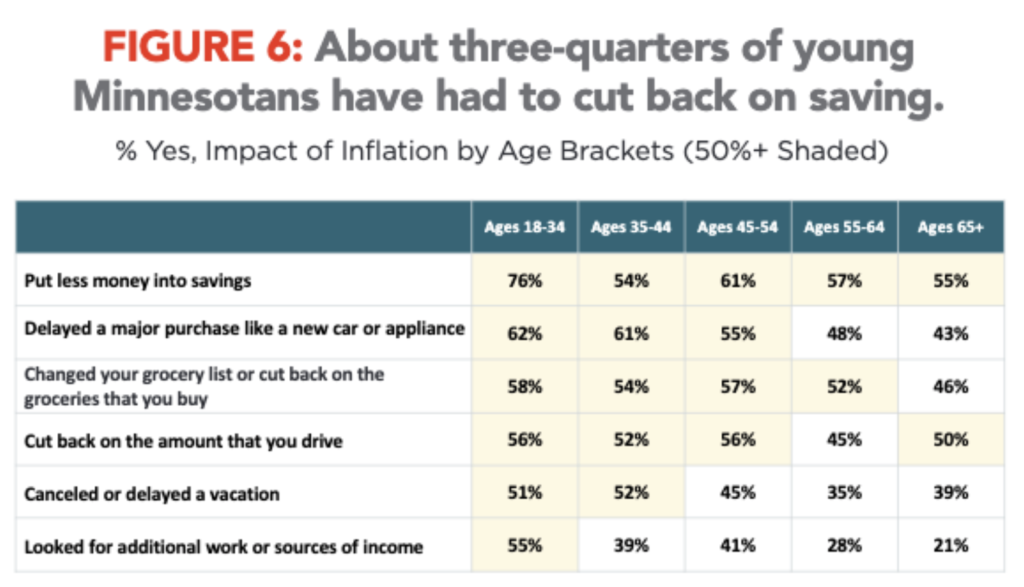
Sixty percent say they have put less money into savings, a reality that is especially worrisome for would-be first-time home buyers, generally younger Minnesotans and those with families. Fifty-three percent have delayed a major purchase like a new car or appliance, while 53 percent have cut back on groceries and 52 percent are driving less than they used to. Forty-four percent say they have canceled or delayed a vacation, and 36 percent have looked for additional work or other sources of income. For Minnesota’s families, the rising cost of living is an ever-present reality that contributes to the anxiety we see in our poll results.
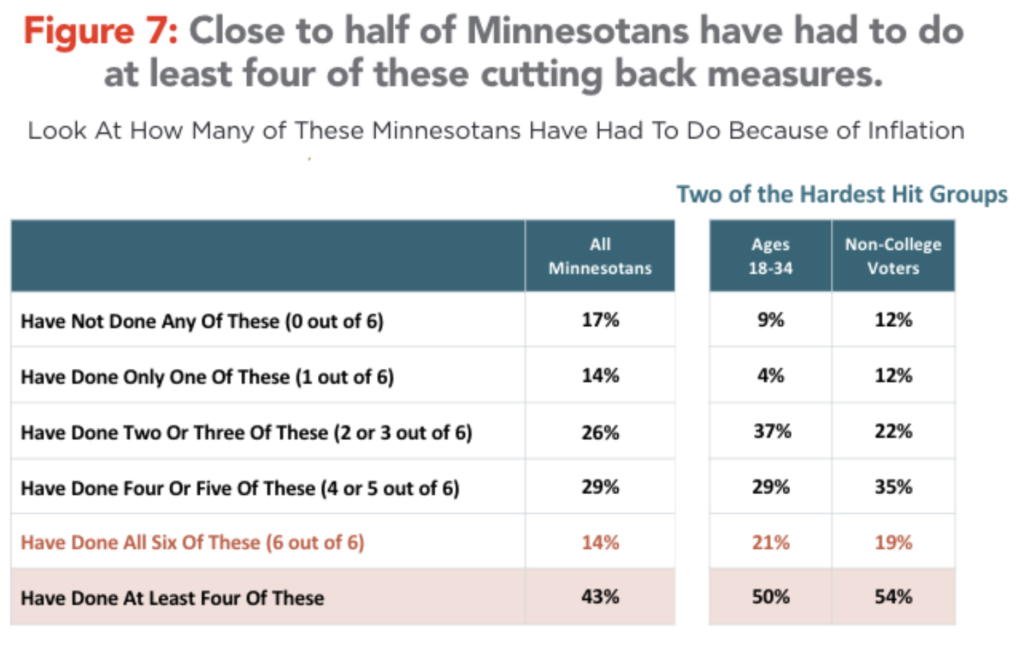
Along with economic concerns, the Thinking Minnesota Poll finds a worrisome loss of confidence in state and national institutions. Minnesotans have never been considered an anti-establishment lot — on the contrary — so the lack of confidence expressed by respondents is remarkable.
Minnesota’s colleges and universities score the best, with 58 percent expressing either a great deal of confidence, or quite a bit of confidence, in them. But even that figure is less than a rousing endorsement. Thirty or 40 years ago, the level of confidence surely would have been higher. Meanwhile, 40 percent say they have not much confidence, or no confidence at all, in the state’s higher education institutions.
And it is downhill from there. Local institutions are next in the confidence rankings, but with mediocre scores. City councils are slightly positive at 53 percent confidence and 46 percent lack of confidence, but school boards are under water at 47 percent confident, 51 percent not confident.
Minnesotans lack confidence in their state’s judicial system, too, with only 46 percent expressing a great deal or quite a bit of confidence, while 50 percent say they have not much or no confidence in our courts. Why are they held in low esteem? We suspect it is because of their seeming unwillingness to sentence violent criminals to meaningful prison terms. Minnesotans from across the state are feeling the consequences of rising violence, and data show this is due mostly to repeat offenders.
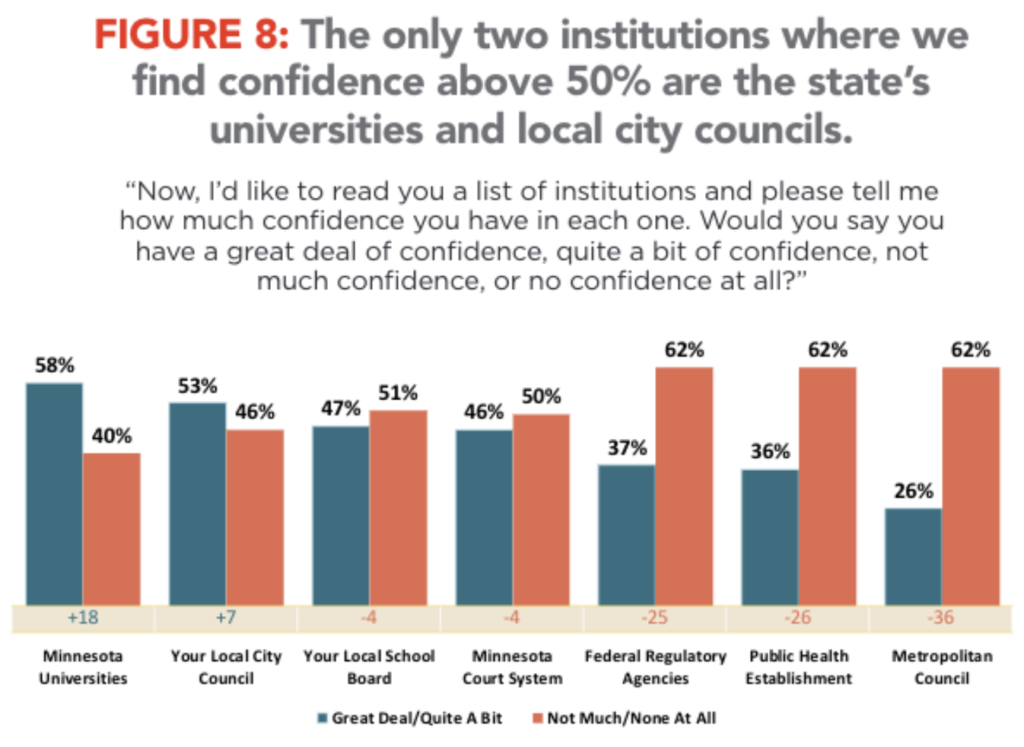
When it comes to federal regulatory agencies like the Food and Drug Administration, Environmental Protection Agency and Federal Trade Commission, the results reflect a disastrous loss of confidence. No doubt, even a decade or two ago, a large majority of Minnesotans would have approved of the work of these agencies. But not today. Only 37 percent expressed confidence in these regulatory agencies, while a large majority, 62 percent, said they have little or no confidence in them.
This result is perhaps especially noteworthy: After two years of the COVID epidemic, Minnesotans have lost confidence in the public health establishment. Only 36 percent expressed confidence in America’s public health establishment, while 62 percent said they have little or no confidence. That is a brutal result for a group of purported experts who have been in the spotlight since 2020.
Finally, the perennially unpopular Metropolitan Council brings up the rear, with a 26 percent confident/62 percent not confident split. You might think that this negative consensus would lead to a trimming of the Council’s powers, but so far that hasn’t happened.

With elections in the offing, we asked how much confidence respondents have in the integrity of elections in Minnesota. Most Minnesotans express a lot of confidence (42 percent) or quite a bit of confidence (23 percent). But a substantial minority, 35 percent, say they have not much, or no confidence in Minnesota’s election integrity. While some have tried to rule such concerns out of bounds, those who lack faith in our electoral processes are by no means a fringe element.
The term “kitchen table issues” entered the popular lexicon in the late 1980s. They are those issues that have the greatest impact on voters and their families and usually reflect the general mood. So, on the eve of the midterm elections, the public mood in Minnesota is somber. Minnesotans are pessimistic about the future, hurting because of the rising cost of living, and have largely lost confidence in many of our state and national institutions. It will be interesting to see how these concerns manifest themselves at the ballot box.